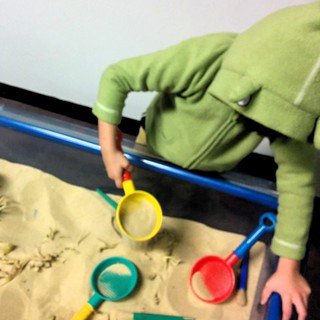This article originally appeared on Geek Feminism.
Warning for mention of sexual assault, and extensive discussion of harassment.
In May, my GF co-blogger and Ada Initiative co-founder Valerie Aurora posted Handy tips for my Internet harassers on her blog. They included:
Threatening my job: Unfortunately, I am my own boss. Try emailing one of the Ada Initiative sponsors? Although they might take that as a sign that the Ada Initiative is doing important work and make another donation. Hmmmm. Maybe create a Yelp page for my file systems consulting business and leave bad reviews? Endorse me for CSS on LinkedIn?
Rape and death threats: Run spell check! There’s nothing more jarring than reading an otherwise creative and well-written death threat and then seeing “decapetate.” Also, chain-saws are so last year. Remember, Gmail won’t display images by default. P.S. I happen to know one of the members of Nirvana and your bright idea has already been done.
Why did she do such a thing, and what resulted? Geek Feminism obtained an exclusive tell-all interview.
Q. Have you received any harassment as a result of this post? Was its quality indeed improved?
Sadly, no. Part of the problem is that my friends loved it — I’ve never had so much positive feedback on a post — but they didn’t want to share it with other people online. I like to joke that it’s the ultimate in dark social since people only talk about it offline using vibrations in the air called “sound.” I think that my friends are more afraid of me being harassed than I am.
Q. The post is pretty out there! Why did you put this post up? What point are you trying to make?
“Self-doxxing” myself (thanks, Kate Losse for the term) was inspired in part by how incompetent and bad the online harassment that I’ve received has been. Most people doing online harassment are just trying to impress other online harassers, at the same time that what they are doing is, frankly, totally unimpressive. The reality is, anyone can spend $25 and get another person’s home address and a bunch of other personal information, but we act like it is some kind of amazing act of computer hacking. By showing how bad people are at online harassing, I’m hoping to remove some of the motivation for people to do the harassment, or at least make them spend more time on it before they get the reward of “so cool, bro!”
I was also inspired by Krystal Ball , who ran for U.S. congress in 2010. When her political opponents tried to slut-shame her into quitting her political campaign over “sexy photos” of herself that they published, she turned around and shamed THEM — both her opponent and the media outlets that published the photos. It was glorious, and it hit home for me: if we let the existence of sexy photo of a woman prevent her from serving in political office, then I and every woman born after 1990 were out of luck. Women’s representation in political office would go down.
Q. Should other people do this?
For most people, no, I wouldn’t recommend it. It was okay for me for a lot of reasons: I already went public about sexual abuse in my family, I’m white, I’m my own boss, I don’t have children or a partner, I have skills that are in high demand, I have lots of friends and a huge support network — my emotional, physical, and economic safety is pretty good. Most women have a lot more to lose.
However, I think it is a very good exercise to think about worst cases like this: what if the thing I am most afraid of other people finding out got published all over the Internet? Because a lot of times, that thing actually doesn’t reflect on you – the shame is on the person who did the original act or publicized a private matter. It can be healing to plan what you might do, even if you don’t actually go public with it yourself.
Q. Why won’t you accept my endorsement for CSS on LinkedIn? I taught you everything you know, dammit.
I’d hate to embarrass you by letting anyone else know that you are the source of my mangled <div>’s! [Ed: good point, well made.]
Q. When are you monetising this? How can investors contact you? How big is your Series A and at what valuation?
Actually, that is a great idea. Instead of vetting a political candidate and saying yes or no, you investigate them and then publish everything that might be a problem in a funny blog post.
Or better yet, here is my favorite idea: If I ever run for political office, I’m going to scan in all my embarrassing naked photos, then watermark them with the email addresses of various journalists. Then email them anonymously to said journalists. Then when the photos get published (it’s “news,” someone else would have, etc.), I can expose the specific person who decided that slut-shaming a candidate was “news” and put the shame where it belongs. Sexism-shaming as a service, SSaaS. I’m accepting funding now.






